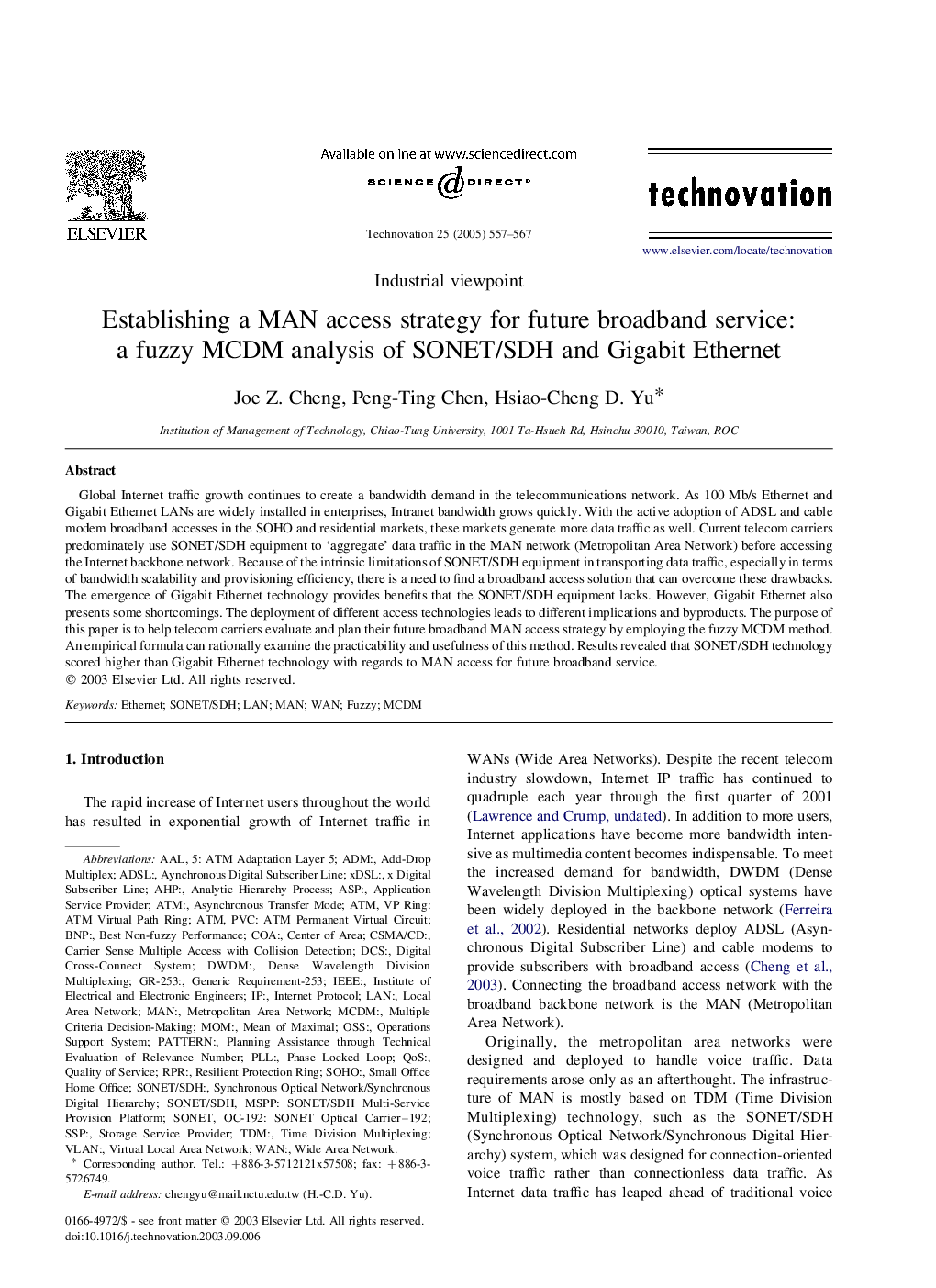| Article ID | Journal | Published Year | Pages | File Type |
|---|---|---|---|---|
| 10494959 | Technovation | 2005 | 11 Pages |
Abstract
Global Internet traffic growth continues to create a bandwidth demand in the telecommunications network. As 100 Mb/s Ethernet and Gigabit Ethernet LANs are widely installed in enterprises, Intranet bandwidth grows quickly. With the active adoption of ADSL and cable modem broadband accesses in the SOHO and residential markets, these markets generate more data traffic as well. Current telecom carriers predominately use SONET/SDH equipment to 'aggregate' data traffic in the MAN network (Metropolitan Area Network) before accessing the Internet backbone network. Because of the intrinsic limitations of SONET/SDH equipment in transporting data traffic, especially in terms of bandwidth scalability and provisioning efficiency, there is a need to find a broadband access solution that can overcome these drawbacks. The emergence of Gigabit Ethernet technology provides benefits that the SONET/SDH equipment lacks. However, Gigabit Ethernet also presents some shortcomings. The deployment of different access technologies leads to different implications and byproducts. The purpose of this paper is to help telecom carriers evaluate and plan their future broadband MAN access strategy by employing the fuzzy MCDM method. An empirical formula can rationally examine the practicability and usefulness of this method. Results revealed that SONET/SDH technology scored higher than Gigabit Ethernet technology with regards to MAN access for future broadband service.
Related Topics
Social Sciences and Humanities
Business, Management and Accounting
Business and International Management
Authors
Joe Z. Cheng, Peng-Ting Chen, Hsiao-Cheng D. Yu,
